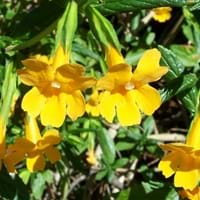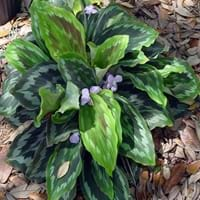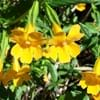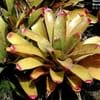Life Span
Perennial
Annual
Type
Flowering Plants, Tender Perennial
Tender Perennial
Origin
Hybrid origin
Southeastern Asia
Types
Not Available
Not Available
Habitat
Dry areas, Rocky areas, Sandy areas, Wet lands
Shady Edge
USDA Hardiness Zone
9-10
8-12
AHS Heat Zone
Not Available
12-10
Sunset Zone
A1, A2, A3, H1, H2, 1a, 1b, 2a, 2b, 3a, 3b, 4, 5, 6, 7, 8, 9, 10, 11, 12, 13, 14, 15, 16, 17, 18, 19, 20, 21, 22, 23, 24
H1, H2, 21, 22, 23, 24
Habit
Cushion/Mound-forming
Clump-Forming
Minimum Width
Not Available
Flower Color
White, Yellow, Red, Orange, Pink, Rose
Purple, Lavender
Flower Color Modifier
Bicolor
Bicolor
Fruit Color
Not Available
Not Available
Leaf Color in Spring
Green
Green, Light Green
Leaf Color in Summer
Green
Green, Dark Green
Leaf Color in Fall
Green
Green, Dark Green
Leaf Color in Winter
Light Green
Light Green
Leaf Shape
Linear
Arrowhead
Plant Season
Summer
Spring, Summer, Fall
Sunlight
Full Sun, Partial Sun
Partial shade
Growth Rate
Medium
Medium
Type of Soil
Loam, Sand
Loam, Sand
The pH of Soil
Acidic, Neutral
Acidic, Neutral
Soil Drainage
Well drained
Well drained
Bloom Time
Early Summer, Summer, Late Summer
Early Summer, Summer, Late Summer, Early Fall
Tolerances
Drought
Drought
Where to Plant?
Ground
Ground
How to Plant?
Seedlings
Divison, Tubers
Plant Maintenance
Medium
Medium
Watering Requirements
Average Water Needs
Requires regular watering
In Summer
Lots of watering
Lots of watering
In Spring
Moderate
Moderate
In Winter
Average Water
Average Water
Soil pH
Acidic, Neutral
Acidic, Neutral
Soil Type
Loam, Sand
Loam, Sand
Soil Drainage Capacity
Well drained
Well drained
Sun Exposure
Full Sun, Partial Sun
Partial shade
Pruning
Remove damaged leaves, Remove dead branches, Remove dead leaves
Remove damaged leaves, Remove dead branches, Remove dead leaves
Fertilizers
All-Purpose Liquid Fertilizer
All-Purpose Liquid Fertilizer
Pests and Diseases
Larva
Red blotch
Plant Tolerance
Drought
Drought
Flower Petal Number
Single
Single
Foliage Texture
Medium
Medium
Foliage Sheen
Matte
Matte
Attracts
Bees, Butterflies, Hummingbirds
Not Available
Allergy
no allergic reactions
Not Available
Aesthetic Uses
Beautification, Showy Purposes
Ground Cover
Beauty Benefits
Not Available
Not Available
Environmental Uses
Air purification
Air purification
Medicinal Uses
Antiseptic, Burns
Carminative, Diuretic, Exoectorant, Pectoral, Stimulates new cell growth, Throat infection
Part of Plant Used
Flowers, Root
Flowers, Leaves
Other Uses
Not Available
Oil is used in perfume, soaps, creams, etc.
Used As Indoor Plant
No
Yes
Used As Outdoor Plant
Yes
Yes
Garden Design
Bedding Plant, Container, Hanging Basket, Mixed Border
Container, Groundcover, Tropical
Botanical Name
Diplacus aurantiacus
KAEMPFERIA elegans
Common Name
Magic Mix Monkey-flower, Monkey-flower
Peacock Ginger
In Hindi
Monkey Flower
Peacock Ginger
In German
Monkey Flower
Pfau Ingwer
In French
Monkey Flower
paon gingembre
In Spanish
Monkey Flower
jengibre pavo real
In Greek
Monkey Flower
παγώνι τζίντζερ
In Portuguese
Monkey Flower
gengibre pavão
In Polish
Monkey Flower
paw imbiru
In Latin
Monkey Flower
gingiberi pavo
Phylum
Tracheophyta
Magnoliophyta
Class
Magnoliopsida
Liliopsida
Order
Lamiales
Zingiberales
Family
Scrophulariaceae
Zingiberaceae
Genus
Diplacus
Kaempferia
Clade
Angiosperms, Asterids, Eudicots
Angiosperms, Commelinids, Monocots
Tribe
Not Available
Not Available
Subfamily
Not Available
Not Available
Number of Species
Not Available
Season and Care of Monkey-flower and Peacock Ginger
Season and care of Monkey-flower and Peacock Ginger is important to know. While considering everything about Monkey-flower and Peacock Ginger Care, growing season is an essential factor. Monkey-flower season is Summer and Peacock Ginger season is Summer. The type of soil for Monkey-flower is Loam, Sand and for Peacock Ginger is Loam, Sand while the PH of soil for Monkey-flower is Acidic, Neutral and for Peacock Ginger is Acidic, Neutral.
Monkey-flower and Peacock Ginger Physical Information
Monkey-flower and Peacock Ginger physical information is very important for comparison. Monkey-flower height is 12.70 cm and width Not Available whereas Peacock Ginger height is 15.20 cm and width 25.40 cm. The color specification of Monkey-flower and Peacock Ginger are as follows:
Monkey-flower flower color: White, Yellow, Red, Orange, Pink and Rose
Monkey-flower leaf color: Green
Peacock Ginger flower color: Purple and Lavender
- Peacock Ginger leaf color: Green and Light Green
Care of Monkey-flower and Peacock Ginger
Care of Monkey-flower and Peacock Ginger include pruning, fertilizers, watering etc. Monkey-flower pruning is done Remove damaged leaves, Remove dead branches and Remove dead leaves and Peacock Ginger pruning is done Remove damaged leaves, Remove dead branches and Remove dead leaves. In summer Monkey-flower needs Lots of watering and in winter, it needs Average Water. Whereas, in summer Peacock Ginger needs Lots of watering and in winter, it needs Average Water.





